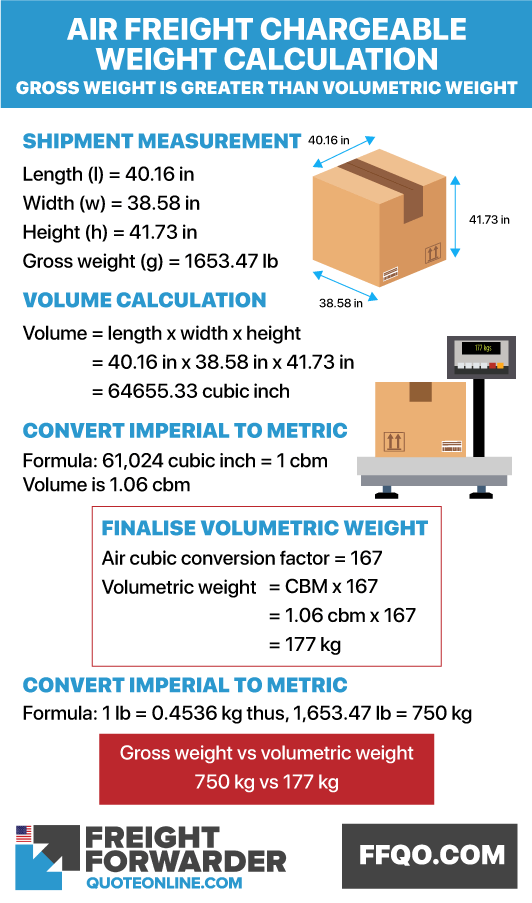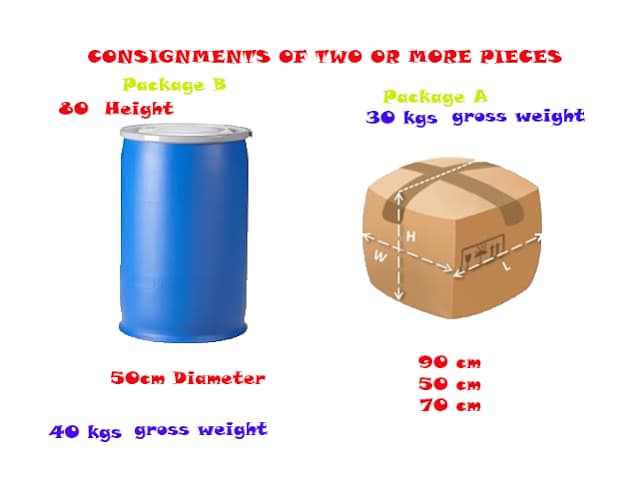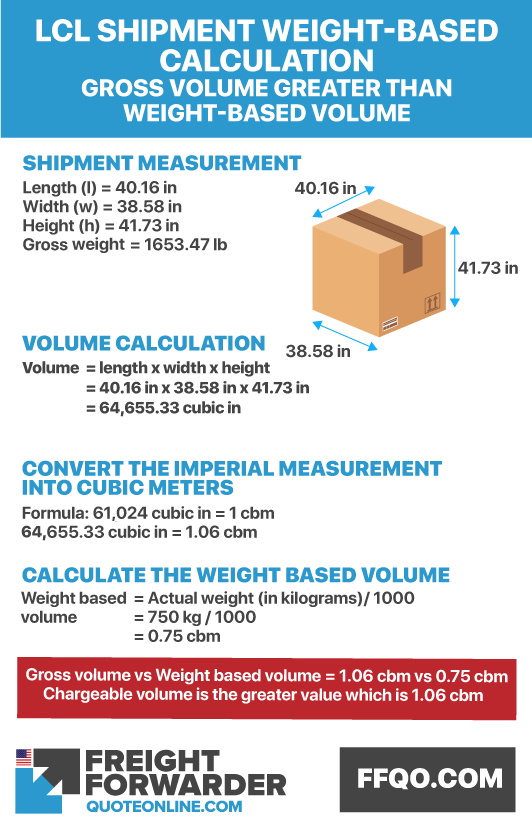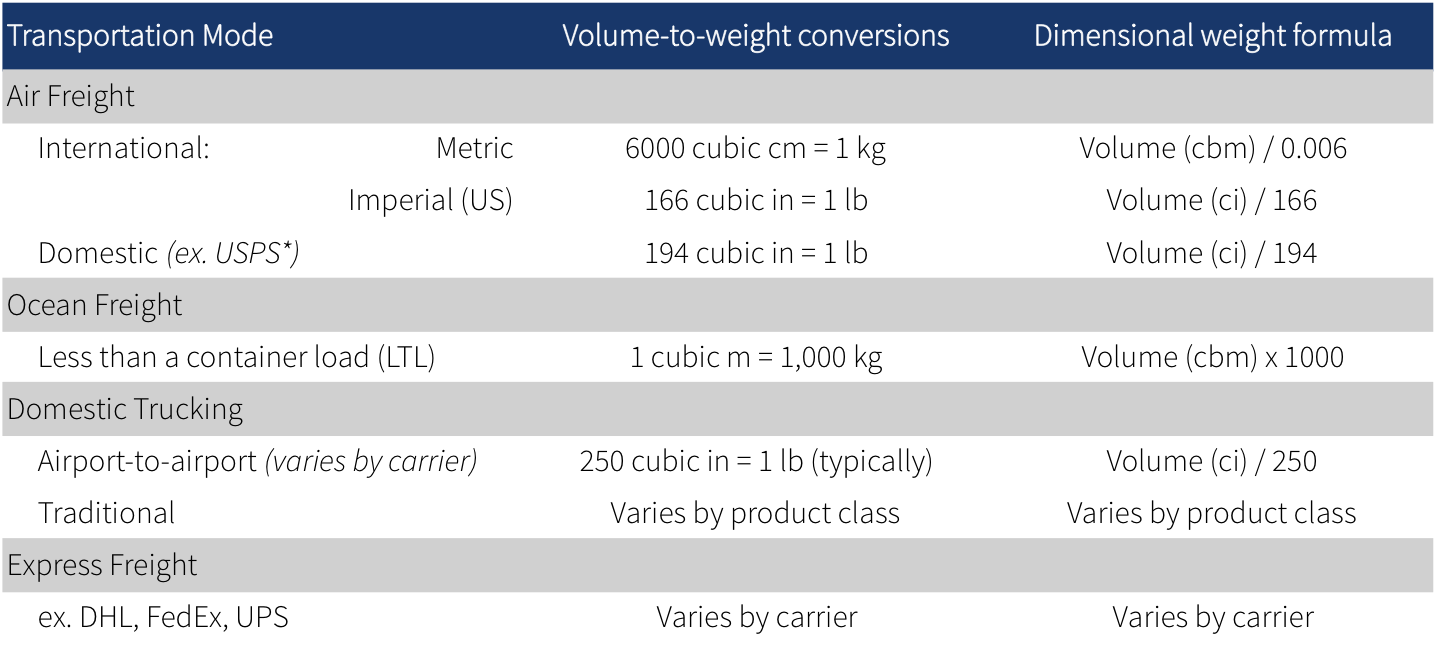ニュース How do you calculate cargo weight?. トピックに関する記事 – What is actual cargo weight

Gross weight, also called actual weight, is the total weight of a shipment. It includes the net weight of the actual product coupled with the weight of the packaging. Gross weight of an aircraft is the summation of the aircraft, fuel, crew, passengers and cargo weights.A shipment's dimensional weight is calculated by dividing its volume (units × length × width × height) by a “dim factor.” The lower the dim factor, the greater the dimensional weight. Between actual weight and dimensional weight, the number that is higher becomes the shipment's chargeable weight (aka billable weight).To calculate dimensional (DIM) weight, multiply the length, width, and height of a package, using the longest point on each side. Then, divide the cubic size of the package in inches by the DIM divisor to calculate the dimensional weight in pounds.
What is the cargo weightCargo weight refers to the total weight of goods or products being transported on a truck, aircraft, or vessel. Cargo weight directly impacts the truck's capacity, fuel efficiency, and overall road safety.
At what weight is cargo considered heavy in kg
[Summary] 1 cubic meter of cargo with a weight greater than 166.67 kg is called heavy cargo, which is generally a heavier cargo. Those less than 166.67 kg are called bubble goods, which are generally larger in size and lighter in weight.Shipping Container Weights
| Typical Weights of Standard Shipping Containers | ||
|---|---|---|
| Length | 10ft | 20ft |
| Max Gross Weight | 11,300kg | 30,480kg* |
| 24,910lbs | 67,200lbs | |
| Tare Weight | 1,300kg | 2,170kg |
What is cargo weight in shipping
Cargo weight is the total amount associated with the cargo being shipped. It includes the weight of the cargo itself, the packaging, and any additional materials. Tare, gross, and net weight are three of the most common types of cargo weights.

Airfreight and Road transport
The volume ratio is 1:6 or 1 metric ton 1000:6 = 166.66 kilo. This means that 167 kilo should not exceed the space of 1 cubic meter. If a consignment of bicycles and furniture has an actual weight of 167 kilo and takes space for 1.73 cubic meter.
How do you calculate kg of a ship
Calculate KG: KG = VMOM/Mass = 20.528/15.59 = 1.317 m above the base line, BL. From the vessel's mass displacement of 15.59 tonnes the values for the reference draught TKC and the KM can be found from the table of hydrostatic curves on page 38.The displacement or displacement tonnage of a ship is its weight. As the term indicates, it is measured indirectly, using Archimedes' principle, by first calculating the volume of water displaced by the ship, then converting that value into weight.[Summary] 1 cubic meter of cargo with a weight greater than 166.67 kg is called heavy cargo, which is generally a heavier cargo. Those less than 166.67 kg are called bubble goods, which are generally larger in size and lighter in weight.

A 20-foot container measures 5.90 metres in length, 2.35 metres in width and 2.39 metres in height. The door width is 2.34 metres, while the door height measures 2.28 metres. The tare weight is 2,300 kilos. The payload is the maximum loading capacity, and it is 28,200 kg on a 20 'container.
Why 1 cbm is 167 kgAirfreight and Road transport
The volume ratio is 1:6 or 1 metric ton 1000:6 = 166.66 kilo. This means that 167 kilo should not exceed the space of 1 cubic meter. If a consignment of bicycles and furniture has an actual weight of 167 kilo and takes space for 1.73 cubic meter.
How many kg can a 20ft container carryThe tare weight is 2,300 kilos. The payload is the maximum loading capacity, and it is 28,200 kg on a 20 'container. The cubic capacity of a 20-foot dry container is 33 cubic metres.
How many CBM is 1kg
CBM, although is the volume of your shipment, the volume may be used for some other purposes, which includes important international freight calculations for courier, air or sea. Below is the conversion of kg to CBM for sea freight easy calculation. 1 kg = 0.001 CBM. 10 kg = 0.01 CBM.

The standard formula used is length (cm) x width (cm) x height (cm) ÷ 6000 = volumetric weight (KG)/1 CBM ≈ 166.6666 KG.On cargo ships, it's a two dimensional thing – volume and weight. A ship's cargo volume capacity is indicated by the net tonnage indicated on its tonnage certificate. Each ton for gross or net tonnage is 100 cubic feet. If very heavy cargo is carried, the ship's loadout is limited to the amount of cargo deadweight.The Simplified tonnage formula for net register tons for any vessel is:
- NRT = M x GRT.
- M = 1.0 for non-self-propelled vessels or propulsion machinery outside the hull.
- M = 0.9 for vessels designed for sailing with propulsion machinery inside the hull.

